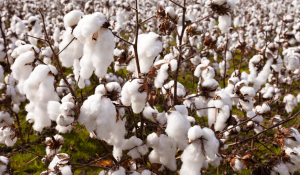The Environmental Impact of Fashion: Issues and Actions for Change
Table of contents
1. How is the fashion industry contributing to GHG emissions ?
2. How can fashion become more sustainable ?
3. Regulatory Framework: Europe Accelerates the Transition
4 The importance of fashion in our society has revived consumers' consciousness
5 How can ClimateSeed help companies in the textile industry in their environmental approach?
The fashion industry is known for its significant negative impact on the environment, yet we are increasingly aware of the consequences of its activities on the planet’s resources and the need to fundamentally rethink its mechanisms and operating models.
How is the fashion industry contributing to GHG emissions?
The fashion industry accounts for roughly 10% of global greenhouse gas (GHG) emissions, more than all international flights and maritime shipping combined. Fashion impacts the environment through CO2 emissions and is also responsible for 35% of plastic microfibers released into the oceans and 20% of industrial water pollution (1). Reducing its carbon footprint is therefore crucial for the planet.
From Fast Fashion to Ultra-Fast Fashion
This environmental impact is amplified by the ever-increasing demand for clothing production. Today, production rates are higher than ever.
What we now call “fast fashion”, the sale of low-quality, inexpensive clothing has driven the creation of new collections and products, transforming the sector over the past twenty years. This trend involves the use of non-sustainable materials and a growing quantity of waste during production and retail phases, as collections are renewed every six months. The result? Thousands of unsold garments are destroyed each year.
More recently, a new phase has emerged: ultra-fast fashion, embodied by giants like SHEIN, Temu, and Cider. These brands produce thousands of new designs daily, leveraging artificial intelligence and data analytics to instantly respond to trends. This model exacerbates existing issues: overproduction, resource exploitation, and proliferation of textile waste. According to NielsenIQ (2023), ultra-fast fashion brands already represent more than 30% of the market in some European countries (2).
The result: constantly renewed collections, massive use of non-recyclable synthetic materials, and millions of unsold or discarded garments each year.
It has become clear that the fashion industry needs a revolution to reduce its environmental impact and align with a more sustainable long-term trajectory. Increasingly, regulations are being implemented to address these challenges.
What about the environmental impact of fashion weeks?
Fashion has always had a close relationship with the climate. Seasonal changes affect fashion trends and products, which is why Fashion Weeks are held each year in February (Autumn/Winter collections) and September (Spring/Summer collections). However, this inherent relationship with climate has taken a negative turn: fashion no longer evolves with the climate; it changes it.
Like clothing production, Fashion Weeks have a significant carbon footprint. (3) This includes:
-
International travel of designers, models, buyers, and journalists
-
Transport and logistics of collections
-
Energy consumption of venues and installations
A Carbon Trust study estimates that travel associated with Fashion Weeks generates approximately 241,000 tonnes of CO₂ per year and consumes as much energy as 3,000 years of lighting the Eiffel Tower (4).

How can fashion become more sustainable?
The first fundamental step toward greater sustainability is choosing the right textiles and materials. Adopting natural, recycled, or low-carbon fibers is essential to reduce impacts during production, washing, and recycling.
The fashion industry has identified three major ways to improve its impact on ecosystems and climate change:
1. Switch to renewable energy
If fashion companies integrate at least 60% renewable energy into their processes, sector emissions could be reduced by roughly 50%.
2. Increase energy efficiency
This can be achieved by reducing energy consumption to perform the same tasks. For instance, producing a single pair of jeans currently requires 10,000 liters of water (5). This amount can be drastically reduced with low-impact dyeing or washing technologies.
3. Align the industry with a circular economy model
Companies should use recyclable materials and eliminate all materials that release plastic microfibers. Supply should also be aligned with demand to avoid overproduction and waste. Today, less than 1% of materials used to produce clothing are recycled. This percentage must increase rapidly, and product design should anticipate repairability, recyclability, and durability.
Although the market for sustainable fashion is growing, it remains very small. For example, the global sustainable fashion market was valued at approximately USD 9.22 billion in 2024, projected to reach USD 11 billion by 2026 (6).
For more tips on how to reduce your environmental impact, read our article on sustainable fashion.

How can the environmental impact of fashion weeks be reduced?
Several measures can make Fashion Weeks more sustainable:
-
Combine seasons and categories, organizing only one Fashion Week per year instead of two
-
Increase online events to reduce travel-related emissions
-
Use Fashion Weeks to raise awareness about climate change, both to encourage brands to adopt ethical codes (as promoted by the Fashion Industry Charter for Climate Action) and to educate the public on climate issues
Fashion weeks are a great outlet to raise awareness of the environmental impact of fashion. On the one hand, to encourage fashion brands to apply codes of ethics, which the Fashion Industry Charter does by promoting sustainability in the industry, on the other hand, to educate the audience about climate change issues.
Regulatory Framework: Europe Accelerates the Transition
In 2022, the European Union launched the Strategy for Sustainable and Circular Textiles (7), aiming to ensure that all textile products are:
-
Durable, repairable, and recyclable
-
Free of harmful substances
-
Produced under fair social conditions
The strategy also strengthens the fight against greenwashing and expands producer responsibility (Circular Economy Action Plan, European Commission, 2022).
In France, destroying unsold stock has been banned since 2022 (Article 35, AGEC Law), pushing brands to rethink inventory and collection cycles.
From October 1, 2025 (8), a new labeling system called the “textile eco-score” is gradually being rolled out online and in stores. Inspired by the Nutri-Score for food, it provides a simple and understandable way to visualize a garment’s environmental impact.
The importance of fashion in our society has revived consumers' consciousness
While solutions for more sustainable sourcing are developing, it is crucial to remember that the ecological transition of fashion does not rely solely on brands: consumers also play a decisive role.
As true agents of change, consumers can act at their level by adopting more responsible practices. The World Bank highlights several simple yet effective actions: repair instead of discard, donate or resell clothing, favor quality over quantity, and buy second-hand.
Even though companies still waste significant resources through overproduction and destruction of unsold stock, consumers are also part of the problem: in some countries, up to 40% of purchased clothing is never worn (World Bank, 2023).
Fortunately, awareness is growing rapidly. More and more consumers pressure brands to genuinely commit to environmental and ethical practices. According to the Fashion Revolution report “What Fuels Fashion?” (2024), across 250 major brands, the average climate transparency score is only 18%, and nearly 47% of brands do not disclose a reduction target covering their full value chain (9).
Consumer behaviors are also improving:
-
Second-hand markets (Vinted, Vestiaire Collective) and clothing rental are growing double digits annually
-
Repair, donation, and upcycling are becoming common habits
-
Awareness of “consume less but better” is especially strong among younger generations
These shifts reflect a deep cultural transformation: fashion is no longer just about style, but also about values and responsibility.
How ClimateSeed can help textile companies in their environmental strategy?
At ClimateSeed, we support companies in developing and implementing their climate strategy, starting with awareness and GHG measurement.
Our consultants assist clients in conducting carbon footprints using our in-house GHG measurement software, which simplifies calculations across any sector.
Our work with textile actors has allowed us to build robust databases and gain a deep understanding of the sector’s value chain. We help companies reduce emissions across Scope 1, 2, and especially Scope 3 (supply chain) and support high-impact carbon sequestration projects, carefully selected by our experts.
Contact us to start your approach.
Conclusion
Fashion brands must now rethink their environmental impact and meet consumer expectations by adopting more sustainable practices.
Solutions already exist: responsible materials, rational production, circular economy, transparency, and innovation.
But real change will come from an alliance of companies, designers, and conscious consumers.
By changing our purchasing habits, we can all positively impact the planet!

Q&A
- Water use: Textile production consumes a huge amount of water, as much as 10,000 litres for a single pair of jeans.
- Water pollution: The chemicals used in textile dyeing pollute watercourses.
- Plastic microfibres: 35% of plastic microfibres in the oceans come from synthetic clothing.
- Textile waste: Overproduction of clothing leads to large quantities of non-biodegradable waste.
- Unsustainable materials: The use of materials such as polyester, derived from petroleum, increases the environmental impact.
- Transport: Emissions linked to the transport of clothing contribute to the industry's carbon footprint.
- Seasonal fashion: Fashion Weeks and frequent collections increase the pressure on production and consumption.
Second-hand clothes have a significant impact on the fashion industry by reducing textile waste and greenhouse gas emissions, while saving precious natural resources such as water and energy.
By extending the life of garments, they support a circular economy and reduce the demand for the production of new items. This makes fashion more accessible and economical for consumers. In addition, the growing popularity of second-hand clothing is raising consumer awareness of sustainable consumption practices, contributing to a positive change in the fashion industry.
Fast fashion is a model of rapid, low-cost production of low-quality clothing, responding quickly to fashion trends.
It is problematic because it leads to massive overproduction, generating textile waste and excessive use of unsustainable resources such as water and energy. This model encourages rapid and frequent consumption, which increases waste and greenhouse gas emissions.
Finally, fast fashion contributes to precarious working conditions in the developing countries where the clothes are often manufactured.
ClimateSeed helps companies in the textile sector to measure their GHG emissions (Scopes 1, 2 and 3) using its GEMS (GHG Emissions Management Software) platform and its team of consultants who are experts in low-carbon strategy.
These consultants are trained in the Bilan Carbone® methodology and have extensive expertise in ISO 14064, the GHG protocol and other national regulatory standards.
They can support customers in the textile sector throughout the various phases of the process: data collection, organisation, entry and interpretation, co-creation of the transition plan, etc.
Contact us for more information.
Sources:
1. European Parliament https://www.europarl.europa.eu/topics/fr/article/20201208STO93327/production-et-dechets-textiles-les-impacts-sur-l-environnement-infographies2. Nielseniq https://nielseniq.com/global/fr/insights/analysis/2023/shein-zara-et-hm-zoom-sur-le-marche-et-les-tendances-de-lultra-fast-fashion/
3. Ordre "Zero To Market": https://www.ordre.com/en/static/pdf/ZeroToMarket.pdf
4. L'ADN - Fashion Week https://www.ladn.eu/nouveaux-usages/etude-marketing/fashion-week-consomme-energie-tour-eiffel-3000-ans/
5. France Bleu "Chiffre du jour : Il faut 1000 litres d'eau pour fabriquer un pantalon en toile jean: https://www.francebleu.fr/infos/societe/chiffre-du-jour-il-faut-10-000-litres-d-eau-pour-fabriquer-un-pantalon-en-toile-jean-1542962969
6. Global Growth Insights https://www.globalgrowthinsights.com/market-reports/sustainable-fashion-market-105106
7. Stratégie de l'UE pour des textiles durables et circulaires https://ec.europa.eu/commission/presscorner/detail/fr/qanda_22_2015
8. Vêtements : ce qu’il faut savoir sur le nouvel éco-score textile. https://www.economie.gouv.fr/particuliers/mes-droits-conso/bien-consommer/vetements-ce-quil-faut-savoir-sur-le-nouvel-eco-score-textile
9. Fast Revolution https://www.fashionrevolution.ch/aktuelles/what-fuels-fashion-die-klimabilanz-der-modebranche-ein-kritischer-blick-auf-transparenz-und-verantwortung-kfdskShare this
You May Also Like
These Related Stories

Sustainable Fashion: 7 Tips to Reduce Your Environmental Impact

What is the Environmental Impact of the Food Industry?


